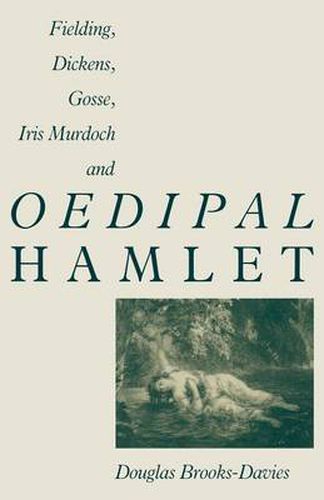Readings Newsletter
Become a Readings Member to make your shopping experience even easier.
Sign in or sign up for free!
You’re not far away from qualifying for FREE standard shipping within Australia
You’ve qualified for FREE standard shipping within Australia
The cart is loading…






This title is printed to order. This book may have been self-published. If so, we cannot guarantee the quality of the content. In the main most books will have gone through the editing process however some may not. We therefore suggest that you be aware of this before ordering this book. If in doubt check either the author or publisher’s details as we are unable to accept any returns unless they are faulty. Please contact us if you have any questions.
In this work, the author uses literary theory to offer re-readings of various major texts. Hamlet is used as the key to understanding the psychological and narrative structures in the works discussed which include Tom Jones , Great Expectations and Father and Son . The question, why do Fielding’s Tom Jones and Dickens’ Pip in Great Expectations watch performances of Hamlet? , lead the author to re-examine these and the other texts. Combining insights drawn from neo-Freudian, feminist and post-structural critical practice with historical context, he reveals the extent to which Fielding and Dickens shaped these fictions in accordance with their perceptions of the Oedipal structure of Hamlet . He also shows how Hamlet raises the level of feminist consciousness in Fielding and Gosse and shows that for them, as well as for Dickens, the Ophelia icon is a sign of the possible redemption of women from patriarchial tyranny. The redemption of Ophelia is also, the author demonstrates, the triumphant theme of Iris Murdoch’s The Black Prince , a study of sexual difference in which Murdoch impersonates the autobiographical voice of a middle-aged writer obsessed with Shakespeare’s play in order to try to rescue not just Ophelia, but the world of words for the woman writer.
$9.00 standard shipping within Australia
FREE standard shipping within Australia for orders over $100.00
Express & International shipping calculated at checkout
This title is printed to order. This book may have been self-published. If so, we cannot guarantee the quality of the content. In the main most books will have gone through the editing process however some may not. We therefore suggest that you be aware of this before ordering this book. If in doubt check either the author or publisher’s details as we are unable to accept any returns unless they are faulty. Please contact us if you have any questions.
In this work, the author uses literary theory to offer re-readings of various major texts. Hamlet is used as the key to understanding the psychological and narrative structures in the works discussed which include Tom Jones , Great Expectations and Father and Son . The question, why do Fielding’s Tom Jones and Dickens’ Pip in Great Expectations watch performances of Hamlet? , lead the author to re-examine these and the other texts. Combining insights drawn from neo-Freudian, feminist and post-structural critical practice with historical context, he reveals the extent to which Fielding and Dickens shaped these fictions in accordance with their perceptions of the Oedipal structure of Hamlet . He also shows how Hamlet raises the level of feminist consciousness in Fielding and Gosse and shows that for them, as well as for Dickens, the Ophelia icon is a sign of the possible redemption of women from patriarchial tyranny. The redemption of Ophelia is also, the author demonstrates, the triumphant theme of Iris Murdoch’s The Black Prince , a study of sexual difference in which Murdoch impersonates the autobiographical voice of a middle-aged writer obsessed with Shakespeare’s play in order to try to rescue not just Ophelia, but the world of words for the woman writer.